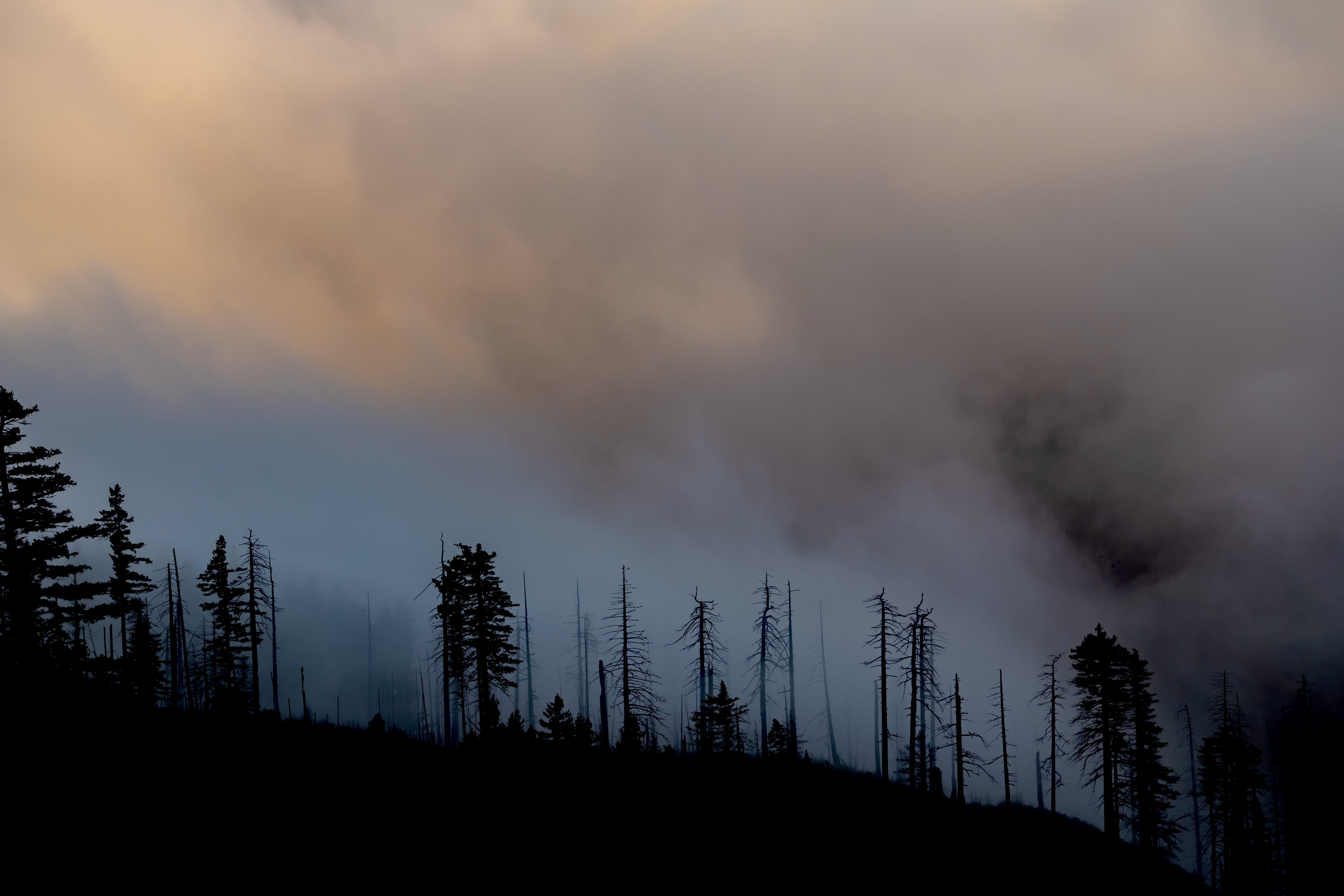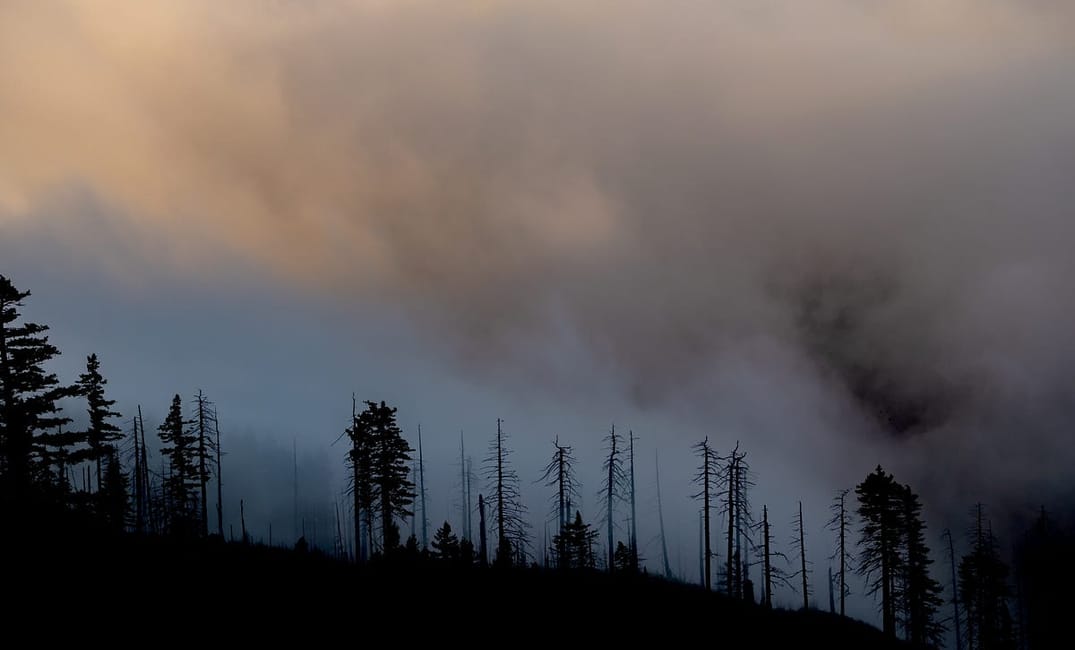
Earlier this month, it rolled in for the first time during the 2021 season. Wildfire smoke — mainly from the hugely destructive Dixie Fire in Northern California — blanketed parts of the East Bay and South Bay. Although San Francisco itself was largely spared, air quality degraded quickly in East Bay cities including Lafayette and Pleasant Hill, often reaching unhealthy levels.
Sign up for The Bold Italic newsletter to get the best of the Bay Area in your inbox every week.
Make no mistake — this may have been the first time in the 2021 season that smoke befouled the Bay Area’s air, but it won’t be the last. This fire season is expected to be especially intense, and more days with bad air are almost certainly ahead.
Wildfire smoke isn’t just a nuisance — Stanford research indicates that it can be deadly. Here are some ways to protect yourself this fire season.
Get a Purifier, and Designate a Clean Room
You can’t remove smoke from the air outside. But you can make your own home — or at least one room within it— a sanctuary of relatively clean air, even when smoke drifts into your area.
The best way to do this is to purchase an air purifier. Ideally, you should get a HEPA purifier. HEPA filters remove more than 99% of the small particulates which makes wildfire smoke deadly. If you can’t find or afford a HEPA filter, you can improvise your own filter using a box fan and a furnace filter with a high MERV rating.
In choosing a purifier, make sure that your purifier is properly sized for your home. Look at the manufacturer’s rated room size, and the purifier’s CADR rating. The room size should match the size of your home, and you should choose a model with the highest possible CADR rating, which translates to the highest possible airflow and cleaning power.
If your home is on the larger size, you may not be able to purify your whole space. If that’s the case, the Environmental Protection Agency (EPA) says you should choose one “clean room” within your home, and make the air in that room as pristine as possible. Since you spend a lot of your day asleep, designating a bedroom as your cleanroom is often a good bet.
Get a purifier that is properly sized for your cleanroom, and run it on full blast. That’s important since most manufacturers’ room size ratings assume you’re running your purifier on the maximum setting. Make sure any windows in your cleanroom are properly sealed and use tape or weather stripping to seal them if they’re not. You can place a towel at the bottom of the room’s door to keep air from leaking underneath. You may need some Zen, but you should avoid burning candles in your cleanroom, or doing anything else which might add to pollution in the air.
Spend as much time in your cleanroom as you can when the outside air quality drops. Bring your laptop in and work there, if you’re working remotely. Even if you can’t control the air outdoors — and even if you can’t purify your whole house — you can at least have one space with clean air, where you can retreat when smoke gets bad.
Wear an N95 Mask
Everyone is wearing masks to protect against Covid-19. Those same masks should protect against wildfire smoke too, right?
Not necessarily. Cloth masks may provide protection from virus particles, but they only provide about 20% protection against wildfire smoke, according to the San Francisco Chronicle. The masks block aerosols from your mouth relatively well, but they don’t provide a tight enough seal to protect against fine particulates. 20% is better than nothing, but it’s not great.
One option does work against smoke, though: the N95 or KN95 mask. Early in the pandemic, these were restricted to health care workers only. Today, though, they’re much easier to find. Stock up now before smoke arrives, and wear an N95 or KN95 if you need to go outside in smoky conditions.
Remember, though, that masks aren’t a perfect solution. Your best bet is still to limit the time you spend outside when the air is bad. Even if you’re so buff that you’re able to go for a run with an N95 mask on and not pass out, you still shouldn’t exercise outside when the AQI degrades.
Use Your Car
One surprising solution to wildfire smoke? Go for a drive — or at least drive to a safe, outdoor spot and spend some time in your car, if you have one. Cars are small, enclosed spaces and most models have a cabin air filter that is designed to remove allergens and dust from the cabin air.
The filters aren’t as effective as a HEPA purifier, but in many cases, they do a good job of dropping smoke levels in your car quite effectively. According to 3M, most cars can reduce interior pollution levels up to 34%. If you own a Tesla or another car with advanced filtration, the filter can likely do even better. Dan Heller wrote in The Bold Italic that he successfully used his Tesla’s BioHazard mode during Bay Area wildfires to fill his car with pristine air.
I tested this my own Honda Odyssey minivan by driving around while the Air Quality Index (AQI) outdoors had reached 180, an unhealthy level. I used a handheld PM2.5 meter to measure the air quality inside the Odyssey. Within about 10 minutes, the AQI had dropped to 50. That’s still borderline polluted, but much better than the air outside.
To take advantage of your car’s cleaning power, keep the doors closed and set your car’s AC to its “recirculate” mode. Keep windows up and close any outside vents. As always, remember never to operate a vehicle in a closed garage or other enclosed space, due to the risk of carbon monoxide poisoning.
Using your car as a pollution sanctuary might be ironic since gas-powered cars release damaging greenhouse gas emissions. But if you need a place to retreat from smoke, consider taking a drive down Highway One, or simply sitting in your car in a pretty spot in Land’s End and reading a book or getting some work done. If you’re like the thousands of Bay Area residents who own an electric car, you can even do this totally guilt-free without adding to already bad air.
As wildfire smoke intensifies during this fire season, now’s the time to prepare. Stock up on masks, consider a purifier and get your cabin filter changed today, so you’re ready the next time smoke strikes.
Thomas Smith is a food and travel photographer and writer based in the San Francisco Bay Area. He owns 12 air purifiers.







